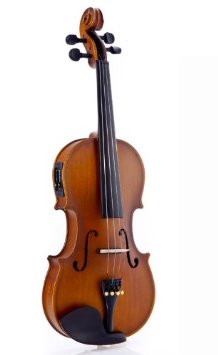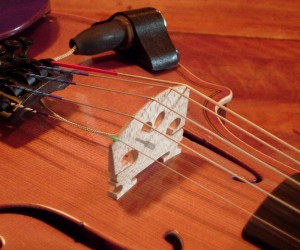Electric or acoustic, that is the question. Deciding whether to buy yourself a traditional wooden violin or to invest in an electric model can be difficult. To some extent, your choice will hinge on the style of music you want to focus on. Many classical and folk musicians prefer conventional designs, while jazz and rock players tend to go for electric models. Of course, things are never quite this simple though. There are a range of other considerations to bear in mind when you’re choosing between these instruments. To help you make an informed decision, here’s a brief guide for beginners.
For many musicians, there is simply no substitute for the warm, rich tones and natural resonance of acoustic violins. These precisely crafted wooden instruments are hollow bodied and their sound is projected through the characteristic f-holes located on both sides of their front plates. Because they don’t require amps, acoustic violins are easy to carry around and you can play them anywhere, from your lounge to a pub or park. These models are often the preferred choice for beginners and they can be inexpensive. They are also available in sets. For example, acoustic violins from Caswell’s Strings come in outfits complete with cases and bows.
However, despite their many advantages, these instruments are associated with some potential drawbacks. For example, if you like experimenting with different sounds and levels of amplification, you might feel restricted by acoustic violins. Also, while it is possible to amplify them using a pick up, these arrangements can be complicated to set up. In addition, even if you use mutes, these instruments tend to be noisy. This could be a problem if you need to practice quietly.
Electric
 Electric violins are solid bodied and they come in a whole range of eye-catching designs. They do produce a more artificial sound than their acoustic counterparts, but many people like the added flexibility and creativity they permit. The sound that comes from these instruments is amplified through a jack output and thanks to their inbuilt headphone amps, they allow for silent playing. Some of these models also offer the option of practising to a backing track, and you can use effects like loop pedals to expand the range of sounds they create.
Electric violins are solid bodied and they come in a whole range of eye-catching designs. They do produce a more artificial sound than their acoustic counterparts, but many people like the added flexibility and creativity they permit. The sound that comes from these instruments is amplified through a jack output and thanks to their inbuilt headphone amps, they allow for silent playing. Some of these models also offer the option of practising to a backing track, and you can use effects like loop pedals to expand the range of sounds they create.
On the flipside, they are harder to transport and set up than acoustic models and to play them properly, you need a power source. When they are not amplified, they produce a tinny sound which is not good for practising.
If you’re torn between these two options, consider going for an electro acoustic instead. As the name suggests, these instruments are a halfway house between the two designs and they can represent a good compromise if you’re after the best of both worlds. These violins have the traditional looks of acoustics and are hollow bodied, but you have the option of amplifying them through a jack output. Bear in mind though, unlike if you go for a fully electric model, you won’t be able to practise silently on these instruments.

